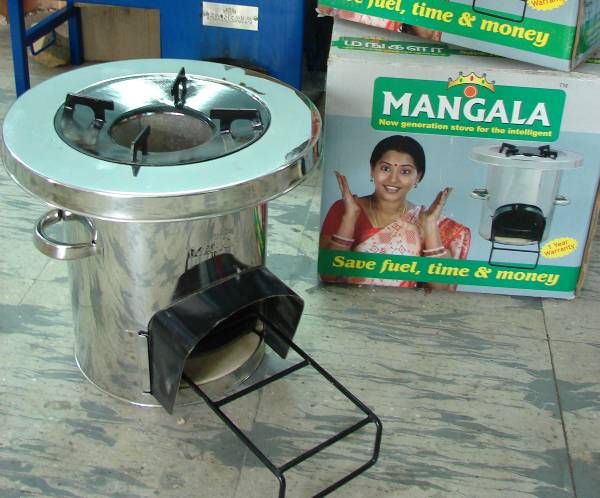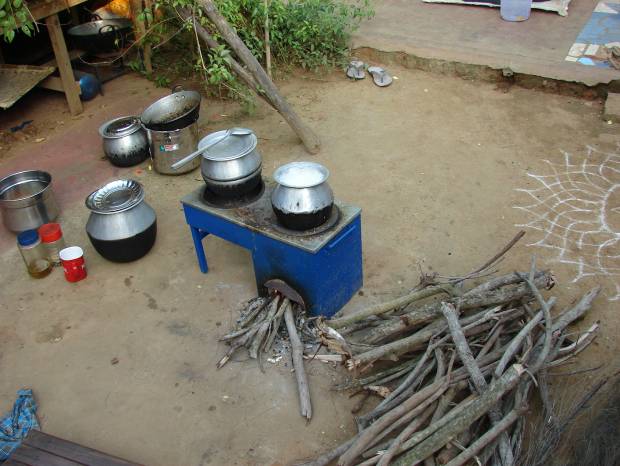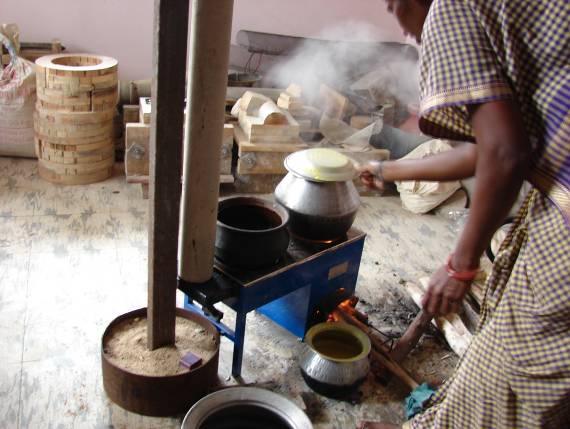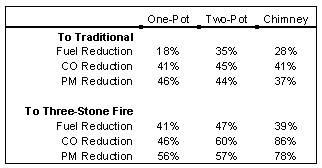Assessing Cook Stove Performance: Field and Lab Studies of Three Rocket Stoves Comparing the Open Fire and Traditional Stoves in Tamil Nadu, India on Measures of Time to Cook, Fuel Use, Total Emissions, and Indoor Air Pollution
Nordica MacCarty, Dean Still, Damon Ogle, Thomas Drouin, Aprovecho Research Center, January 2008



Overview
The following is an initial report of the performance of three types of Rocket stoves: a single pot stove, a double pot stove, and a double pot stove with chimney, compared to both the open fire and traditional stoves commonly used in Tamil Nadu, India. The stoves were tested using the Controlled Cooking Test to measure fuel use, carbon monoxide and particulate matter emissions made while local cooks prepare commonly made foods. Portable emissions measurement equipment created by Aprovecho Research Center was used to measure emissions made in both the lab and field.
The in-field use of Rocket stoves (without pot skirts) resulted in approximately 18% to
35% fuel savings as compared to the traditional stoves and reduced fuel used from 39% to 47% compared to the Three Stone Fire. Emissions savings for the non-chimney stoves
were about 45% when compared with the traditional stoves and about 50-55% in
comparison to the three stone fire. When emissions released into the room were compared
for the chimney stove, a 40% improvement was seen over the traditional chimney stove,
while an 84% improvement was seen in IAP as compared to the three-stone fire.

The performance of the traditional stoves might be slightly reduced in homes, as they are frequently fully submerged in the earth and surrounded by mud, lowering both heat
transfer and combustion efficiency.
This data also showed that the same meal cooked on a kerosene stove would cost 3.5
Rupees for the fuel at the current subsidized price of 9 Rupees per Liter. The Rocket
stoves used an average of about 1.5 kilos of firewood to cook the standard meal, while the traditional stoves used an average of 2.2 kilos. The cost of cooking with wood is
dependant on the source of the fuel.
The three Rocket stoves and the Three Stone fire had been previously tested using the
UCB revised Water Boiling Test in the Aprovecho laboratory. Relative reductions as
compared to the three-stone fire in the laboratory studies were analyzed. Emissions
reductions from the laboratory and field testing agreed within 18% or less, while fuel
savings agreed within 12% except for the chimney stove. Time savings agreed within
about 30% or better.
Summary
The Controlled Cooking Test series conducted on the pilot stoves in India was a positive experience. Results showed fuel and emissions savings to be substantial, and generally inline with what was expected from the laboratory design. The portable emission equipment functioned well and was easy to use and unobtrusive to the cooking process.
Observation of the cooking practice was informative, and spending time with the women who will actually use the stove was invaluable. It is hoped that the results of this study can be shared in order to encourage other stove groups to take the time and direct resources needed to conduct field testing in a careful and scientific manner.
See Aprovecho Research Center Publications
Saldos - Entrega gratuita
